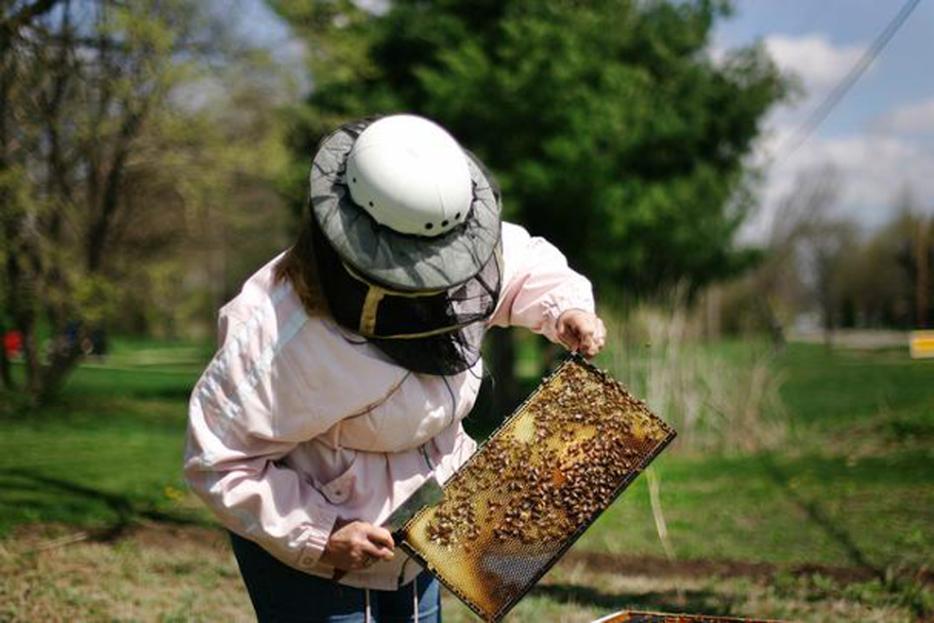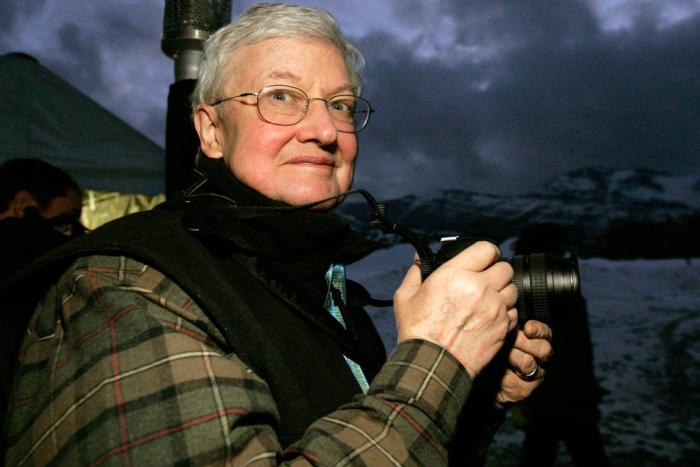Bees are kind of like migrant workers; they live in ramshackle shared housing, get trucked around to fields and orchards all over North America, and our food economy depends on them. An estimated 30 percent of what Americans eat is either directly pollinated by honeybees, or (if routed to the dinner table via the slaughterhouse) feeding on crops pollinated by honeybees. You may have seen a photo of Einstein with his certified-genius hair stamped over with the quote, “If the bee disappeared off the surface of the globe, then man would only have four years of life left. No more bees, no more pollination, no more plants, no more animals, no more man.” This quote is almost certainly apocryphal, and the direct line from no bees to no humans is controversial, but you get the idea.
Last week, the New York Times reported that in 2012, due to a condition called Colony Collapse Disorder or CCD, the U.S. lost “40 percent or even 50 percent of the hives needed to pollinate many of the nation’s fruits and vegetables.” The problem first surfaced in 2005, when beekeepers started reporting that their hives had been mysteriously deserted, like ships with no rats left on them. In some cases, 90 percent of their bees were gone.
In a recent study in Social Studies of Science, Sainath Suryanarayanan and Daniel Lee Kleinman from the University of Wisconsin-Madison examine how CCD has become a sticky epistemological mess. Regulatory bodies like the Environmental Protection Agency (EPA) are set up to assess what scientists who work at universities or labs say, not the hands-on experience of beekeepers coping with CCD.
It used to be that beekeepers were primarily interested in making honey. In the early years of the 20th century, the researchers note, “Since beekeepers made honey in the process of pollinating farmers’ crops, they usually didn’t require much more than ‘a handshake’ as remuneration for pollinating the crop.” The natural activity of bees flitting from flower to flower wasn’t monetized until the 1940s or so, when large-scale industrial agriculture meant that farmers needed a whole hell of a lot of bees. Now, beekeepers truck their bees all over the country to pollinate crops, and “pollination-for-hire” has supplanted honey production as the main way beekeepers make money.
With the rise of large-scale industrial farming, entomology also changed—from the study of insects to the study of insecticides. Entomologists gained positions in universities and federal bodies like the USDA by convincing farmers that their expertise would cut down on harmful pests and increase crop yields. Involving more scientists in agricultural life started to marginalize the people working with plants or animals. By mid-century, “bee scientists asserted that while beekeeping itself could be pursued by anyone as a hobby and a business, the ‘technical problems’ that increasingly confronted beekeepers were best left under the purview of scientifically trained specialists.”
Newspapers are currently reporting the possibility that CCD is due to a class of insecticides called neonicotinoids. They’re derived from nicotine, and they’re systemic pesticides, a type that can be embedded in seeds so that as the plant grows, it becomes poisonous to insects. The question of whether these pesticides are implicated in CCD is the centre of the argument between beekeepers and bee scientists.
Suryanarayanan and Kleinman report that part of the problem is that while regulatory bodies like the EPA do take testimony from beekeepers, beekeepers tend to talk like this:
We’ve been hauling bees trans-state for 72 years, and I know how to take care of bees while transporting them. And this was just 200 miles – almost zero stress. Nutritional deficiencies due to these CCD hives having only one kind of pollen [cotton] also don’t make sense because they came out of cotton with strong brood, went into a good fall with lots of diverse ambient pollen and were strong in December. The only other variable that stood out was that every inch of the cotton fields that year had been treated with imidacloprid presumably in order to combat a drought-induced aphid [pest] outbreak.
As the researchers point out, phrases like “strong brood” and “a good fall” aren’t easy for regulatory bodies to quantify.
The expert testimony of bee scientists relies on artificially conducted trials that mimic real-world conditions but manipulate them; they’re trying to figure out what the effect of neonicotinoids is on their own, and differentiate these pesticides from other possible causes for CCD, like mites. For beekeepers, a long career watching bees thrive, and then seeing the introduction of a new pesticide followed by sudden, drastic decline of bee populations seems self-explanatory.
In addition, since the 1980s, the EPA has worked on a “false-negative” orientation; this means that unless an insecticide can be definitively proven to be harmful, it will be approved for use. Basically, an insecticide is innocent until proven guilty. In 2008, in response to requests for action from beekeepers and environmental groups, the EPA sent out a public response basically saying that to ban neonicotinoids, they would need to prove that they posed an “imminent hazard,” and that a causal link between the pesticides and the deserted bee colonies wasn’t showing up in their studies.
It’s not so simple as “pesticides are bad”—beekeepers routinely spray their hives with chemicals to reduce mites (as agrochemical stakeholders triumphantly point out). Nor are beekeepers united in their opinions of what causes CCD; the best guess is that it’s a mix of systemic pesticides, chemicals applied by beekeepers, pathogens, parasites, and poor nutrition—poetic as it sounds, even bees can’t live on almond flowers alone. But if we want to eat any almonds next year—or squash, or apples, or onions, or watermelons, or cherries—the EPA may need to revisit its mechanisms for how “non-expert” testimony is valued.
--
Studies Show is a weekly column that appears every Thursday






